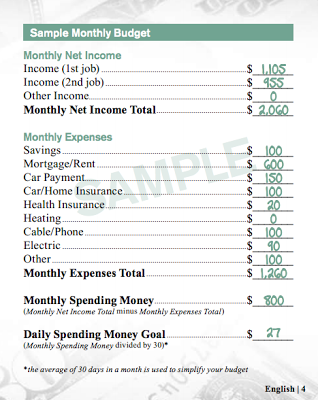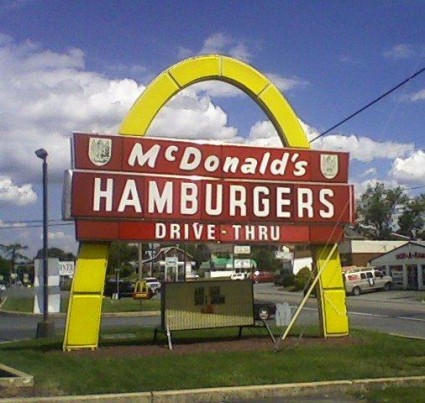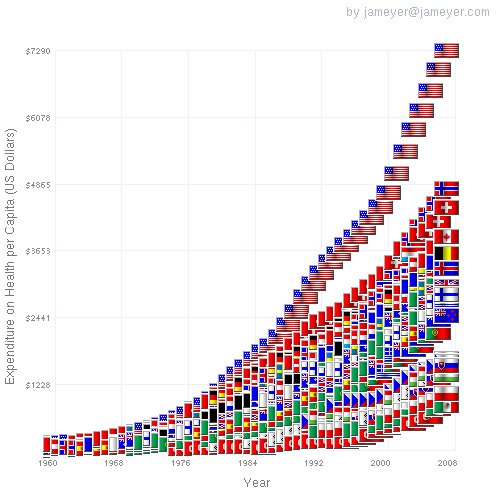 The
“coming economic collapse” has already been happening. You see, the
truth is that the economic collapse is not a single event.
The
“coming economic collapse” has already been happening. You see, the
truth is that the economic collapse is not a single event.It has already started, it is happening right now, and it will accelerate during the years ahead. The statistics in this article show very clearly that the U.S. economy has fallen dramatically over the past ten years or so.
Unfortunately, there are lots of mockers out there that love to mock the idea of an economic collapse even though one is happening right in front of our eyes. They love to say stuff like this (and I am paraphrasing):
“An economic collapse is never going to happen. We can consume far more wealth than we produce forever. We can pile up gigantic mountains of debt forever.
There is no way that the party is over. In fact, the party is just getting started. Woo-hoo!” That sounds absolutely ridiculous, but “economists” and “journalists” actually write things that reflect these kinds of sentiments every single day.
We inherited the greatest economic machine in the history of the world, but we totally wrecked it. We have been able to live far, far beyond our means for the last couple of decades thanks to the greatest debt bubble in the history of the planet, but now that debt bubble is getting ready to burst. Anyone with half a brain should be able to see what is coming. Just open your eyes and look at the facts. The following are 40 stats that prove the U.S. economy has already been collapsing over the past decade…
#1 According to the World Bank, U.S. GDP accounted for 31.8 percent of all global economic activity in 2001. That number dropped to 21.6 percent in 2011.
#2 The United States was once ranked #1 in the world in GDP per capita. Today we have slipped to #14.
#3 The United States has fallen in the global economic competitiveness rankings compiled by the World Economic Forum for four years in a row.
#4 Since the year 2000, the size of the U.S. national debt has grown by more than 11 trillion dollars.
#5 Back in the year 2000, our trade deficit with China was 83 billion dollars. Last year, it was 315 billion dollars.
#6 In the year 2000, about 17 million Americans were employed in manufacturing. Today, only about 12 million Americans are employed in manufacturing.
#7 The United States has lost more than 56,000 manufacturing facilities since 2001.
#8 The United States has lost a staggering 32 percent of its manufacturing jobs since the year 2000.
#9 Between December 2000 and December 2010, 38 percent of the manufacturing jobs in Ohio were lost, 42 percent of the manufacturing jobs in North Carolina were lost and 48 percent of the manufacturing jobs in Michigan were lost.
#10 Back in 1998, the United States had 25 percent of the world’s high-tech export market and China had just 10 percent. Today, China’s high-tech exports are more than twice the size of U.S. high-tech exports.
#11 In 2002, the United States had a trade deficit in “advanced technology products” of $16 billion with the rest of the world. In 2010, that number skyrocketed to $82 billion.
#12 The United States has lost more than a quarter of all of its high-tech manufacturing jobs since the year 2000.
#13 The number of full-time workers in the United States is nearly 6 million below the old record that was set back in 2007.
#14 The average duration of unemployment in the United States is nearly three times as long as it was back in the year 2000.
#15 Throughout the year 2000, more than 64 percent of all working age Americans had a job. Today, only 58.7 percent of all working age Americans have a job.
#16 The official unemployment rate has been at 7.5 percent or higher for 54 months in a row. That is the longest stretch in U.S. history.
#17 The U.S. government says that the number of Americans “not in the labor force” rose by 17.9 million between 2000 and 2011. During the entire decade of the 1980s, the number of Americans “not in the labor force” rose by only 1.7 million.
#18 The average number of hours worked per employed person per year has fallen by about 100 since the year 2000.
#19 The U.S. economy continues to trade good paying jobs for low paying jobs. 60 percent of the jobs lost during the last recession were mid-wage jobs, but 58 percent of the jobs created since then have been low wage jobs.
#20 The U.S. economy lost more than 220,000 small businesses during the recent recession.
#21 The percentage of Americans that are self-employed has steadily declined over the past decade and is now at an all-time low.
#22 According to economist Tim Kane, the following is how the number of startup jobs per 1000 Americans breaks down by presidential administration…
Bush Sr.: 11.3
Clinton: 11.2
Bush Jr.: 10.8
Obama: 7.8
#23 In the year 2000, there were only 17 million Americans on food stamps. Today, there are more than 47 million Americans on food stamps.
#24 In the year 2000, the ratio of social welfare benefits to salaries and wages was approximately 21 percent. Today, the ratio of social welfare benefits to salaries and wages is approximately 35 percent.
#25 Since Barack Obama entered the White House, the average price of a gallon of gasoline in the United States has risen from $1.85 to $3.64.
#26 More than twice as many new homes were sold in the United States in 2005 as will be sold in 2013.
#27 Right now there are 20.2 million Americans that spend more than half of their incomes on housing. That represents a 46 percent increase from 2001.
#28 The price of ground beef increased by 61 percent between 2002 and 2012.
#29 According to USA Today, water bills have actually tripled over the past 12 years in some areas of the country.
#30 In 1999, 64.1 percent of all Americans were covered by employment-based health insurance. Today, only 55.1 percent are covered by employment-based health insurance.
#31 Median household income in the United States has fallen for four years in a row.
#32 As I mentioned recently, the homeownership rate in America is now at its lowest level in nearly 18 years.
#33 Back in the year 2000, the mortgage delinquency rate was about 2 percent. Today, it is nearly 10 percent.
#34 Median household income for families with children dropped by a whopping $6,300 between 2001 and 2011.
#35 Back in 2007, about 28 percent of all working families were considered to be among “the working poor”. Today, that number is up to 32 percent even though our politicians tell us that the economy is supposedly recovering.
#36 According to the Federal Reserve, the median net worth of families in the United States declined “from $126,400 in 2007 to $77,300 in 2010“.
#37 According to the New York Times, the average debt burden for U.S. households that earn $20,000 a year or less “more than doubled to $26,000 between 2001 and 2010“.
#38 Medicare spending increased by 138 percent between 1999 and 2010.
#39 During Obama’s first term, the federal government accumulated more debt than it did under the first 42 U.S presidents combined.
#40 Today, more than a million public school students in the United States are homeless. This is the first time that has ever happened in our history. That number has risen by 57 percent since the 2006-2007 school year.
Are there any other items that you would add to this list? Please feel free to join the discussion by posting a comment below…

Republished with permission from: The Economic Collapse







 Liberty Blitzkrieg
Liberty Blitzkrieg
 Wall Street Journal – by Mort Zuckerman
Wall Street Journal – by Mort Zuckerman